Your Toughest Wine Questions Answered
Geek Out on All Things Wine with These Temecula Valley Southern California Wine Country Rockstars

Wine can be intimidating. We’ve all stood in the aisles of our favorite wine stores scanning the backs of labels for hints of anything that might give us a clue of what the juice in the bottle tastes like. We’ve all donned the deer-in-headlights look when a sommelier asks us what type of wines we prefer. Who hasn’t felt a sense of dread during the daunting wine service ritual, where the server waits expectantly while you swirl, sniff, sip and determine whether they may pour the wine for your guests, all eyes on you?
While being a wine expert isn’t a requirement for kicking back and enjoying a glass or two of our favorite beverage, sometimes a better understanding of how a product is made allows us to appreciate it even more.
Which is why we have brought in some of Temecula Valley Southern California’s best and brightest wine stars to answer some of your most frequently-asked wine questions!
Q: The vineyards are starting to look so pretty this time of year! What is actually going on with the vines right now?
A. Greg Pennyroyal, Vineyard Manager, Wilson Creek Winery & Vineyards
As April approaches the vineyard is leaving its dormant stage and entering its first vegetative stage of budbreak. Wine Grapes (Vitis vinifera) are deciduous meaning they lose their leaves in fall and go into a dormancy period usually starting in late October and ending in April. Grapes also need a minimum of 150 Chill hours, a summation of the hours below 45 degrees, to assure they do not bud out too early and get damaged by a late frost. In Temecula, our standard “Frost Free Date” is April 15, giving a positive spin to a date that is usually not so great.
The grapes’ dormancy period also coincides with the rainy season of our Mediterranean climate – wet in winter, dry in summer, with a coastal influence. Our historical rain average for this time of year would be about ten inches; however we are under four inches to-date. This will assist in delaying a budbreak that is too early, however will require that we irrigate and add fertility as the cover crops and soil biology have had less of an opportunity to increase soil fertility.
After budbreak, the vines will enter a vegetative state where initial growth is remarkably fast. If you visit a vineyard one weekend, the following weekend will look like a different vineyard. Following this growth spurt, the vines set flowers. Grape flowers are very small and inconspicuous. When the flowers emerge, they are wrapped under a small cap called, appropriately enough, the calyptra. When the flowers are ready for pollination a gentle brush will cause the calyptra to pop off and the flower will rapidly open before your eyes, great vineyard entertainment after a glass of wine. The flowers have both male and female parts, so they do not need bees to pollinate. White wines are the first to emerge from dormancy followed by red varietals.
Q: How do winemakers get those tiny bubbles in bottles of wine?
A. Sharon Cannon, Director of Operations, Akash Winery
Those fabulous bubbles that make Champagne or sparkling wine so wonderful are products of carbon dioxide (CO2), created during the fermentation process when sugar and yeast are added to a still base wine. There are three primary ways to make sparkling wine:
Some winemakers choose a labor-intensive traditional method of trapping the gas in the bottle, which then “lay down,” sometimes for decades, producing high-quality sparkling wine (think Champagne). The most important part of this process is the secondary fermentation, which happens as mentioned, inside the bottle. During this process, the yeast consumes the sugar which is where the carbon dioxide is produced. The wine is then left to lay on their “lees,” (dead yeast cells) for a period of time. While this may sound gross, these yeast cells are what give traditional method sparkling wines their signature toasty, yeasty, brioche-like flavors. The bottles are gradually rotated and tilted until they end up upside down, so that all of this sediment makes its way to the neck of the bottle, which is dipped into a solution to freeze the solid contents, making them easy to remove. Bottles are then topped up with the “dosage,” a combination of sugar and/or wine, donned with a cork and wire cage, and then ready for you to drink.
The Charmat Method (or tank method) is where the winemaker will use a pressurized tank for the secondary fermentation process (think Prosecco). Here the liqueur de tirage (a mix of wine, sugar and yeast) is added to the pressurized tank of still wine, in which the secondary fermentation. The wine, once ready, is then filtered and bottled from the tank. These wines are generally youthful and easy drinking!
Lastly, there is just plain carbonation, where carbon dioxide is simply added into the wine (think of your Soda Stream injecting bubbles into your water). You’ll know this one if you’ve ever had it though, as the bubbles with dissipate very quickly!
And remember, those bubbles you have in your fridge which you are waiting for a “special occasion” to open: The special occasion is today, friends!
Q. Speaking of stuff getting into my wine, sometimes I see things floating in my bottle? Does this mean the wine is bad?
A. Jim Hart, Winemaker, Hart Winery
There are a number of things that can cause “chunkies” in wine, some of them intentional and others maybe not so intentional. In so-called “natural wines” (so-called because there really isn’t a true definition for natural wines), a certain amount of sediment and haze should be expected, as these wines are usually un-fined and unfiltered. Additionally, these wines are often made without added sulfites, and can occasionally undergo secondary fermentation in the bottle causing haze and “floaties.” More conventional wines are sometimes intentionally bottled without filtration as some winemakers believe filtration somehow strips a wine’s character (not true), and are okay with some sediment in their wine.
The most common cause of stuff floating is with wines that haven’t been properly cold or heat stabilized. Wines that aren’t properly heat stabilized will throw small amounts of haze or, in extreme cases, what appear to be floating globs in the bottle. Wines that aren’t cold stable will, when chilled, lose tartaric acid which will look like crystals (sometimes called wine diamonds).
The good thing about all these things you might find floating in your wine is that none of them are really harmful; just be careful who gets the last glass!
Q. I love rosé. But how is it made?
A. Nick Palumbo, Winemaker, Palumbo Family Vineyards & Winery
Rosé wine has gotten a bad rap from wine drinkers over the last few decades simply because so much of it has been made to appease the palate of a generation of consumers that grew up on overly sweet, processed beverages. That said there are basically three ways to make a rosé wine which can be broken down into a not-so-great way, a good way, and the best way!
Many don’t realize that all grapes, white or red, have clear juice inside when they first come off the vine. It is the skin of the grape that contains the color; so, in order to get a red wine, the winemaker needs to keep the juice in contact with the skins of a red grape in order for the wine to develop its color, along with everything else that gives the wine structure and flavor.
Some inexpensive rosé wines are simply a blend of finished Red and White wines that in different proportions can make a wine that looks the part but rarely if ever tastes anything like a classic, well-crafted rosé.
Then there is the saignée, or “to bleed” method, which is a really a good way to make two different wines from a single lot of grapes. It is also considered a way of making red wine better or more intense by “bleeding” off some of the juice early in the process, resulting in two separate lots that can be made into both a red and a rosé. If the winemaker is serious about the rosé, a very good wine can be made. However, this rosé is often considered a biproduct of the red winemaking. The locals drink that, while the winery ships the more expensive reds off to market.
The last method is an approach that wineries employ when their sole intent is to make a quality rosé, which results in a rosé that is often superior to the above methods. This method, often called “Limited Skin Maceration” (LSM) is a process in which the grapes are crushed and left in contact with the skins for a limited amount of time. The color can start to develop within minutes for grape varieties with very intense color, or can take up to 48 hours in some cases. When the desired color is achieved, the juice is separated from the skins, and fermentation is started much like a white wine would be made.
I have made wines from both saignée and LSM methods with great success, but am really proud of our current Spring release of our Rosato Secco. This wine is an LSM version of Sangiovese that is perfect for sipping by the pool, pairing with a charcuterie board, or – even better – a classic bowl of moules frites (steamed mussels and French fries) served by a beach in Southern California within miles of our beautiful Temecula Wine Country. Drink Local!

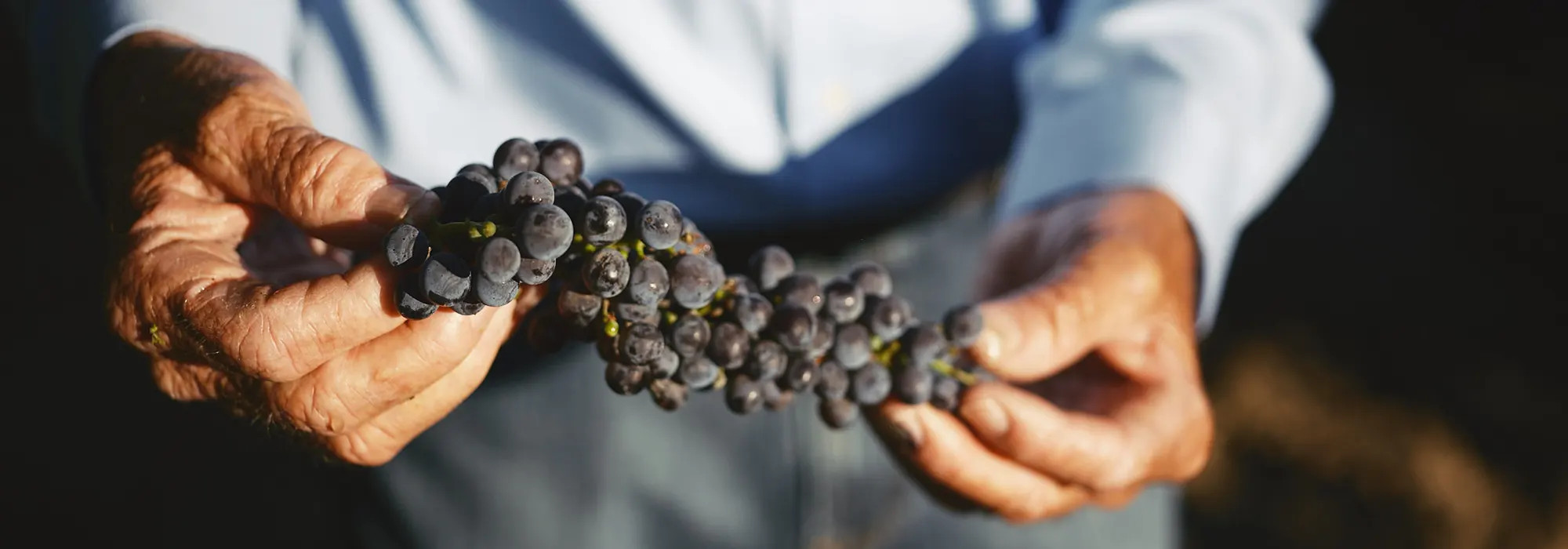

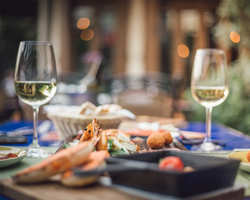
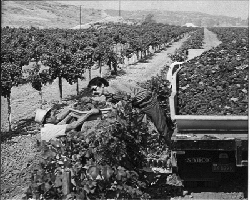

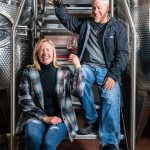
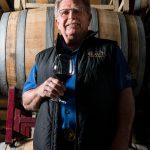
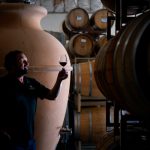
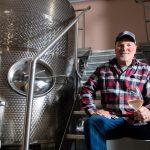

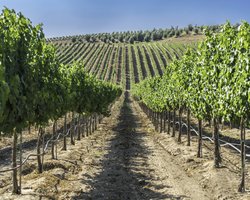


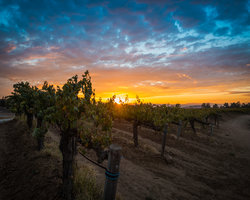
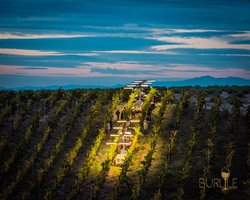 You sit down to dinner and uncork a beautiful bottle of 2014 Syrah. As you swirl and sip, you start to imagine life as a winemaker. The romance of waking up on a cool September morning, opening your blinds and looking out onto your perfectly manicured vineyards. The satisfaction of tending to your vines, watching them flourish, and ultimately fermenting and bottling the grapes for your family dinner table.
You sit down to dinner and uncork a beautiful bottle of 2014 Syrah. As you swirl and sip, you start to imagine life as a winemaker. The romance of waking up on a cool September morning, opening your blinds and looking out onto your perfectly manicured vineyards. The satisfaction of tending to your vines, watching them flourish, and ultimately fermenting and bottling the grapes for your family dinner table.